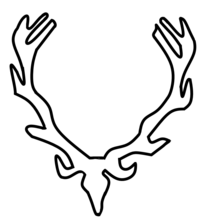118th Jäger Division
| 118th Jäger Division | |
|---|---|
 118. Jäger Division Vehicle Insignia | |
| Active | 1941–1945 |
| Country | |
| Allegiance | Adolf Hitler |
| Size | Division |
| Part of | XV Mountain Corps V SS Mountain Corps XXII Mountain Corps LXVIII Army Corps |
| Engagements |
|
The 118th Jäger Division (Template:Lang-de) was a German infantry division of World War II. It was formed in April 1943, by the redesignation of the 718th Infantry Division which had itself been formed in April 1941. It was transferred to Yugoslavia in May 1941, to conduct anti partisan and Internal security operations. It took part in the Battle of the Sutjeska in June 1943, and fought partisans in Bosnia before being sent to the Dalmatian coast to guard against Allied landings in the summer of 1944.
It then fought on the Eastern Front in the Vienna offensive during the final months of the war before surrendering to the British in Austria in May 1945.[1]

Background
The main purpose of the German jäger divisions was to fight in adverse terrain where smaller, coordinated formations were more facilely combat capable than the brute force offered by the standard infantry divisions. The jäger divisions were more heavily equipped than mountain division, but not as well armed as a larger infantry formation. In the early stages of the war, they were the interface divisions fighting in rough terrain and foothills as well as urban areas, between the mountains and the plains. The jägers (it means hunters in German), relied on a high degree of training and slightly superior communications, as well as their not inconsiderable artillery support. In the middle stages of the war, as the standard infantry divisions were downsized, the Jäger structure of divisions with two infantry regiments, became the standard table of organization[2]
Area of operations
- Austria (May 1941 – May 1941)
- Territory of the Military Commander in Serbia and the Independent State of Croatia (May 1941 – April 1943)
- Balkans (April 1943 – July 1944)
- Dalmatia (July 1944 – September 1944)
- Yugoslavia (September 1944 – January 1945)
- Balkans, Hungary and Yugoslavia (January 1945 – May 1945)[1]
Commanders
- Generalleutnant Johann Fortner (3 May 1941 – 14 March 1943)
- Generalleutnant Josef Kübler (14 March 1943 – 10 July 1944)
- Generalmajor Hubertus Lamey (10 July 1944 – 8 May 1945)[1]
Order of battle
- Jäger Regiment 738
- Jäger Regiment 750
- Artillerie Regiment 668
- Aufklärungs (Reconnaissance) Bataillon 118
- Panzerjäger (Tank destroyer) Bataillon 118
- Pionier (Engineer) Bataillon 118
- Funk (Signals) Bataillon 118[1]
References
Notes
- ^ a b c d Wendal, Marcus. "117 Jager Division". Axis History. Retrieved 4 March 2009.
- ^ Mcoy, Breaker (2009). German Army 101st Light Division, 101st Jager Division 1941 – 42.
Bibliography
- Shepherd, Ben (2012). Terror in the Balkans: German Armies and Partisan Warfare. Harvard University Press. ISBN 978-0-674-04891-1.
